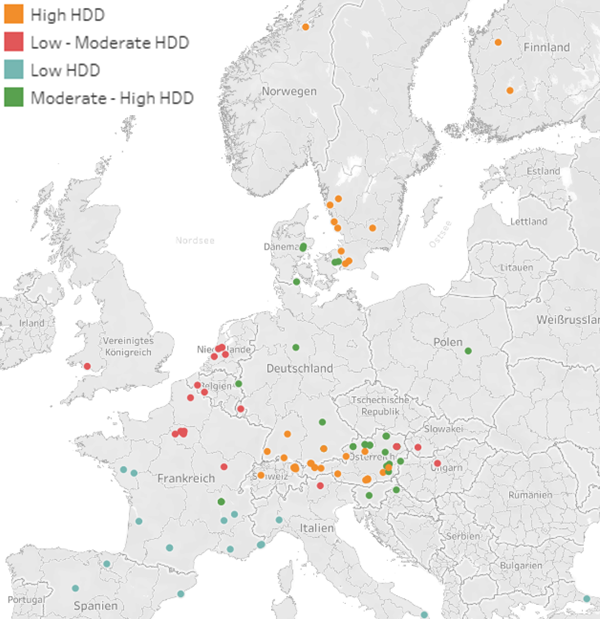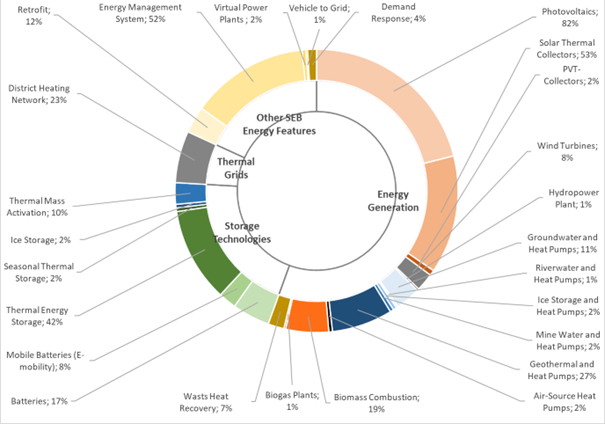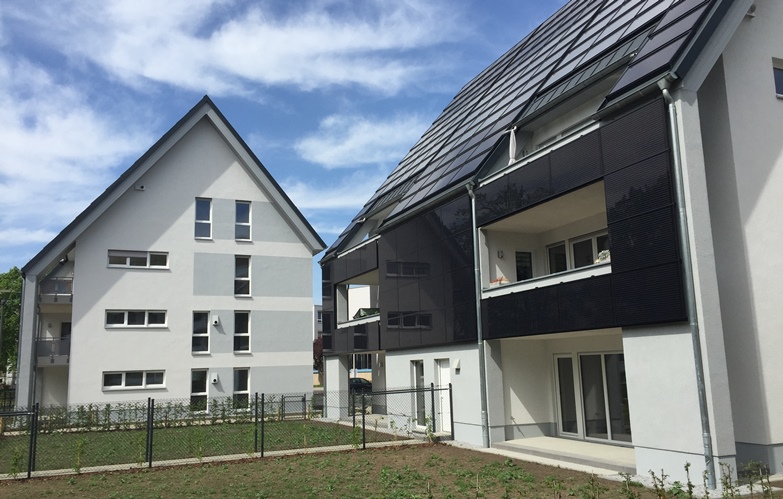Posted: December 22, 2022

Banner: IEA SHC Task 66
The revision of the Energy Performance of Buildings directive tightens the energy standards for buildings across the European Union. The member states are to establish national building renovation plans that transform existing buildings into zero-emission buildings. IEA SHC Task 66 Solar Energy Buildings will contribute to this discussion by gathering and analysing the concepts of more than 100 solar energy buildings. The researchers aim at identifying successful and approved solutions for heating, cooling, electricity and energy storage. Thomas Ramschak from AEE INTEC presented the interim results of this huge market and technology assessment during an industry workshop in the autumn in Kassel, Germany. The results will be published in a report titled Description of available technology portfolio in the first half of 2023.
The Task 66 team started by reviewing solar energy building (SEB) initiatives and related projects to get information about currently applied technologies and system solutions. Further focal points are the classification and techno-economic assessment for SEBs and the development of SEB solution sets and guidelines.“We consider emerging technologies with the potential to be successfully applied within the context of the task”, said Thomas Ramschak, Leader of Subtask D, describing the approach. “From the revision and analysis, the technologies will be classified into different topics and areas such as heating, cooling, electricity and energy storage, and evaluated using the KPIs from Subtask A. For each of these technologies we will include information about the level of maturity and the compilations of development and deployment plans.”

Figure 1: Classification of four climate zones ranging from warm climates with a low number of heating degree days (HDD) to colder climate with a higher number of HDD.
Source: AEE Intec
126 SEBs from 17 countries
In the meantime, the Task 66 team has collected information on a total of 126 SEBs from 17 countries, all of which will be included in the forthcoming report. The majority are new residential buildings but there are also mixed-use buildings listed and 12 % are retrofitted.
The individual projects differ in terms of energy generation, storage and distribution as well as their heating needs (HDD - Heating Degree Days) depending on their location (see figure 1). The examined buildings showcase all variants of solar technologies. "82 % of all buildings use PV, 53 % solar thermal, and PVT collectors are used in 2 % of the projects", explained Ramschak, regarding the technology portfolio (see figure 2). Furthermore, different storage technologies are found in the selected SEBs: batteries (17 %), mobile batteries (e-mobility) (8 %), thermal storage (44 %), ice storage (2 %) and thermal mass activation (10 %). A total of 23 % of the SEBs are connected to a district heating network.

igure 2: SEB technologies overview Source: IEA SHC Task 66
A total of 20 of the SEBs considered were selected for in-depth case studies. The choice was made according to the following criteria:
- Stand-alone buildings to city districts (+ test chambers)
- Very ambitions demonstration cases
- Emerging technologies
- Upgrading single technologies to be part of a large orchestra.
Among others, two apartment buildings in Germany, built in 2019, were selected for these in-depth case studies. They have a total of 100 m2 of solar thermal collectors on the roof and 172 m2 of PV on the roof and facades. There is also a 24.6 m3 heat-storage tank, a 46.8 kWh battery storage and a charging station for electric vehicles. In summer, the flats can be cooled via geothermal collectors. A special feature is the flat-rate rent for living, heating, cooling and electricity.

Two highly solar-powered apartment buildings in Cottbus/Germany
Photo: TU Bergakademie Freiberg, chair of technical thermodynamics
Another example is two apartment buildings in the neighbourhood Vögelebichl, Innsbruck, Austria. They fulfil the Passive House Plus standard by using PV, solar thermal and a double-staged groundwater-source heat pump with de-superheater for energy generation. A mechanical ventilation heat-recovery system provides good quality air while ensuring energy savings.
Once the report with the description of available portfolios is finalised, the task 66 team will deepen the discussion and identify and describe promising future technologies in a second report. “By linking the individual technologies from the technology portfolio, we will develop economically and ecologically feasible SEB solutions for the different building types and climates”, added Ramschak, summarising the next steps. IEA SHC Task 66 will run until June 2024.
More information: